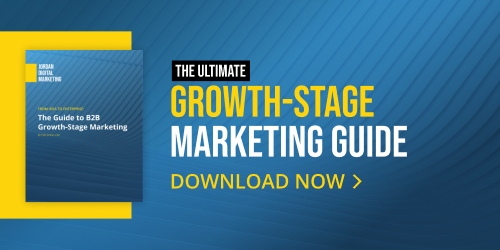At JDM, we offer a robust training series for new hires and newly promoted teammates. In this edition of Training Takeaways, we’ll look at tips pulled from our training on how to conduct great audits for paid media campaigns.

7 Tips for Paid Ad Account Audits
Almost every agency I’ve encountered does some form of account audit – and every one is different. To help differentiate the audits we do at JDM, I conducted a team-wide training on our approach. Here are the top seven tips from the training!
1. If you’re using an audit as part of a sales process, address the prospective client’s biggest frustrations.
Brands won’t come to you as a solution provider if they’re happy with their current situation. Ask questions that help you recognize the brand’s biggest need (you’ll get answers like, “My current agency isn’t strategic enough and doesn’t bring me new ideas”) and make sure your audit speaks directly to those needs.
2. Don’t just use audits for sales – use them to keep accounts in great shape.
Part of the value of agencies is having a bunch of experts with different perspectives. Long-standing accounts can almost always benefit from a fresh set of eyes that can spot new opportunities.
3. Start with campaign settings.
From Search Partners in Google to Audience Expansion on LinkedIn, campaign settings in the “on” position are often spending inefficiently. Always check campaign settings to see what’s being used, and prepare to do a deeper dive where you see permissions enabled.
4. Look for offline conversion tracking.
Whether the account is B2B or B2C, integrating data from a client’s CRM is essential to optimizing spend for the highest-value activities (e.g. SQLs are far more valuable than just leads). Accounts running without this data integrated are allowing Google, Facebook, etc. to tackle the lowest-hanging fruit.
5. Check the use of exclusions.
Most brands have use cases for exclusions that will save spend and/or improve the customer experience. That could mean excluding brand terms from Performance Max campaigns, excluding lists of customers from awareness campaigns, etc. Make sure you’re keeping spend focused on the right users and terms by culling those that don’t make sense.
6. Make sure creative is optimized for placements.
Whether you’re auditing accounts on LinkedIn, Facebook, TikTok, etc., you’ll often find that creative is sized or proportioned in a way that doesn’t take advantage of its settings (for instance, Facebook Stories or Reels should always have a 9:16 ratio, but we see 1:1 ratios all the time).
7. Check lead forms!
The best B2B ad campaigns will fail if lead forms aren’t optimized. Look for red flags like a lack of UTMs on lead form landing pages, the same form being used for all ads, unnecessary form fields that curtail fill rate, etc.
We’re always excited about the chance to audit new accounts and show brands the growth opportunities they might be missing. Drop us a line to request yours today!
